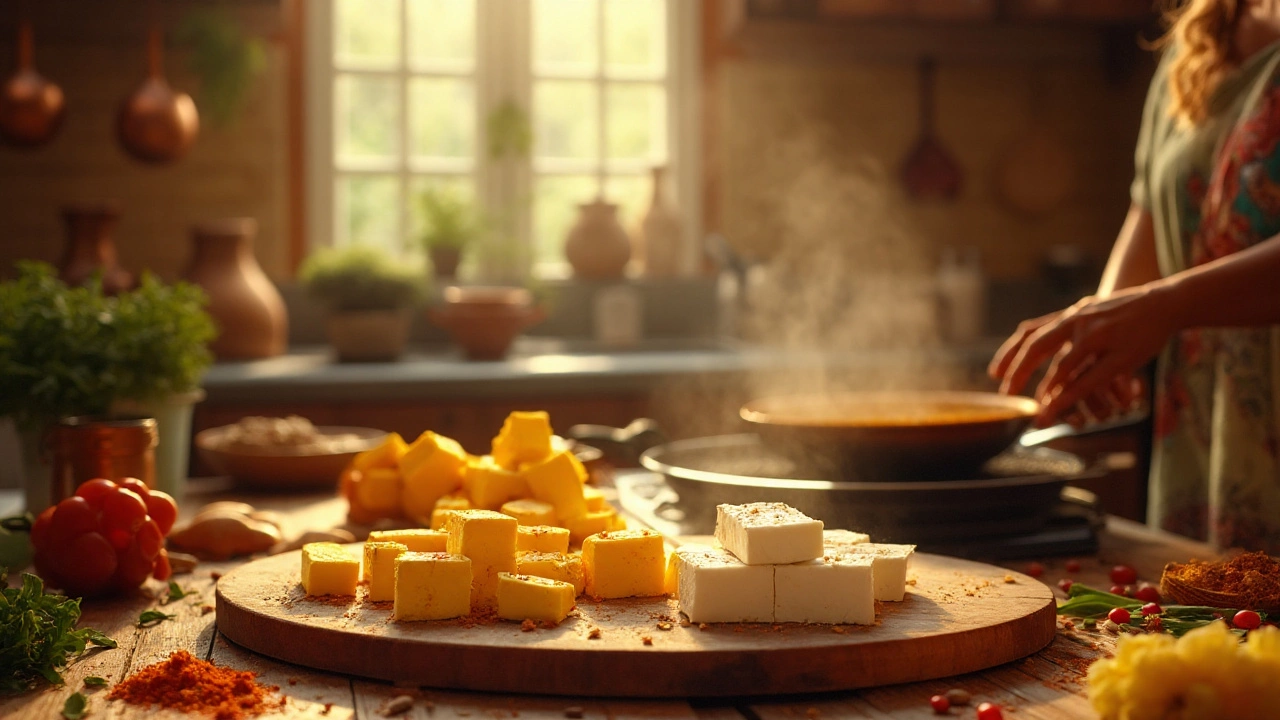Tofu in Indian Cooking
When cooking with Tofu, a soft, soy‑derived protein that soaks up flavors. Also known as soy curd, it fits perfectly into Indian kitchens. You’ll hear it described as the "vegetarian meat" of the East, but it’s more than a replacement. Its neutral taste makes it a blank canvas for the bold spices Indian food loves. Whether you’re stirring it into a steaming pot of curry, a sauce‑based dish seasoned with turmeric, cumin, and garam masala or tossing cubes into a crisp salad, tofu brings a satisfying bite without overpowering the palate.
Why tofu feels at home in Indian kitchens
Traditional Indian cheese paneer, a fresh, milk‑based cheese with a firm crumb shares tofu’s love of soaking up gravy. The key difference is source: paneer comes from dairy, while tofu originates from soy, a legume rich in protein and healthy fats. This makes tofu a go‑to for vegans and anyone watching cholesterol. Both proteins can be cubed, fried, or grilled before joining a masala broth, and both hold their shape when simmered. Because tofu is lower in saturated fat, it often appeals to health‑focused cooks who still crave the richness of classic dishes like palak tofu (spinach‑tofu) or tofu kadai (spicy bell‑pepper gravy).
Another reason tofu thrives here is its versatility across regional styles. In the North, where dairy dominates, tofu can step into buttery shahi sauces, absorbing the creaminess without adding extra ghee. Down South, crisp‑fried tofu cubes mingle with coconut‑based rasam or mingle in a tangy tamarind‑spiced stew. Even street‑food stalls have adopted tofu for quick‑cook chaats, sprinkling it with chaat masala, sev, and a drizzle of tamarind chutney. This geographic adaptability shows tofu isn’t a novelty—it’s a true bridge between plant‑based nutrition and the deep flavor heritage of India.
Cooking tofu for Indian dishes follows a few simple rules that keep it from turning mushy. First, press the block for at least 20 minutes to squeeze out excess moisture; this helps it brown nicely when sautéed. Second, coat the pieces lightly with a mix of chickpea flour and spices before frying—this creates a crisp outer layer that holds sauce better. Third, add tofu toward the end of a simmering curry; a brief 5‑minute heat is enough to let it soak up the gravy without breaking down. Following these steps turns a humble block into a texturally interesting protein that competes with the chew of meat or paneer.
Beyond texture, tofu brings nutritional punch. A 100‑gram serving delivers about 8 grams of complete protein, iron, and calcium (if calcium‑set). Compared to paneer, it offers similar protein but far less saturated fat and calories, making it ideal for weight‑aware eaters. Pair it with fiber‑rich lentils—think dal, a staple legume dish cooked with spices—and you have a complete amino‑acid profile. This combo mirrors the classic dal‑paneer pairing but stays fully plant‑based, a win for both health and ethical dining.
Ready to put tofu to work? Below you’ll find a mix of recipes and tips: a fragrant tofu‑filled biryani that swaps meat for protein, a quick masala‑tofu stir‑fry that uses pantry staples, and a creamy tofu‑based korma that mimics the richness of a traditional dairy korma. Each article walks you through prep, spice balance, and serving ideas, so you can experiment confidently. Whether you’re a beginner looking for a simple sauté or an experienced cook aiming to reinvent classic dishes, these resources give you the tools to make tofu a staple in your Indian cooking repertoire.

Paneer vs Tofu: Which Tastes Better?
Explore the flavor, texture, nutrition, and culinary uses of paneer and tofu to decide which one wins the taste test for your kitchen.